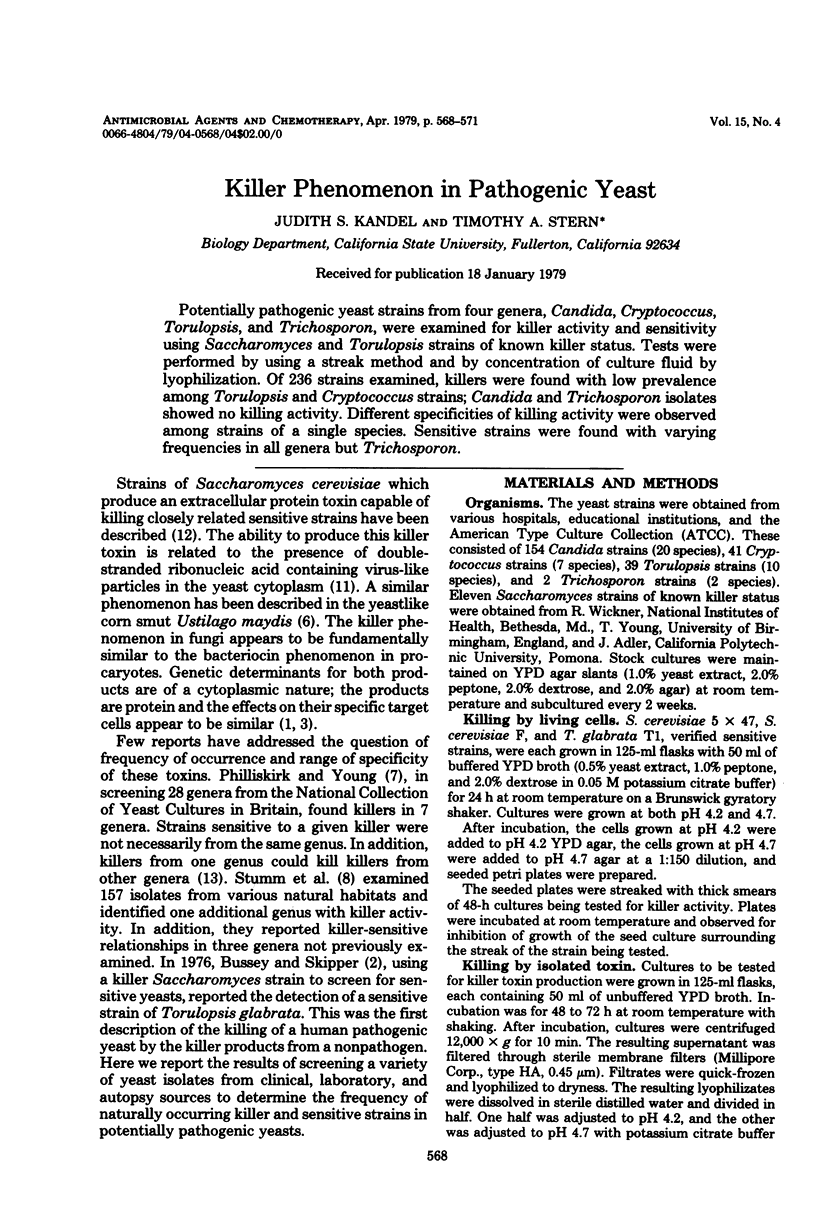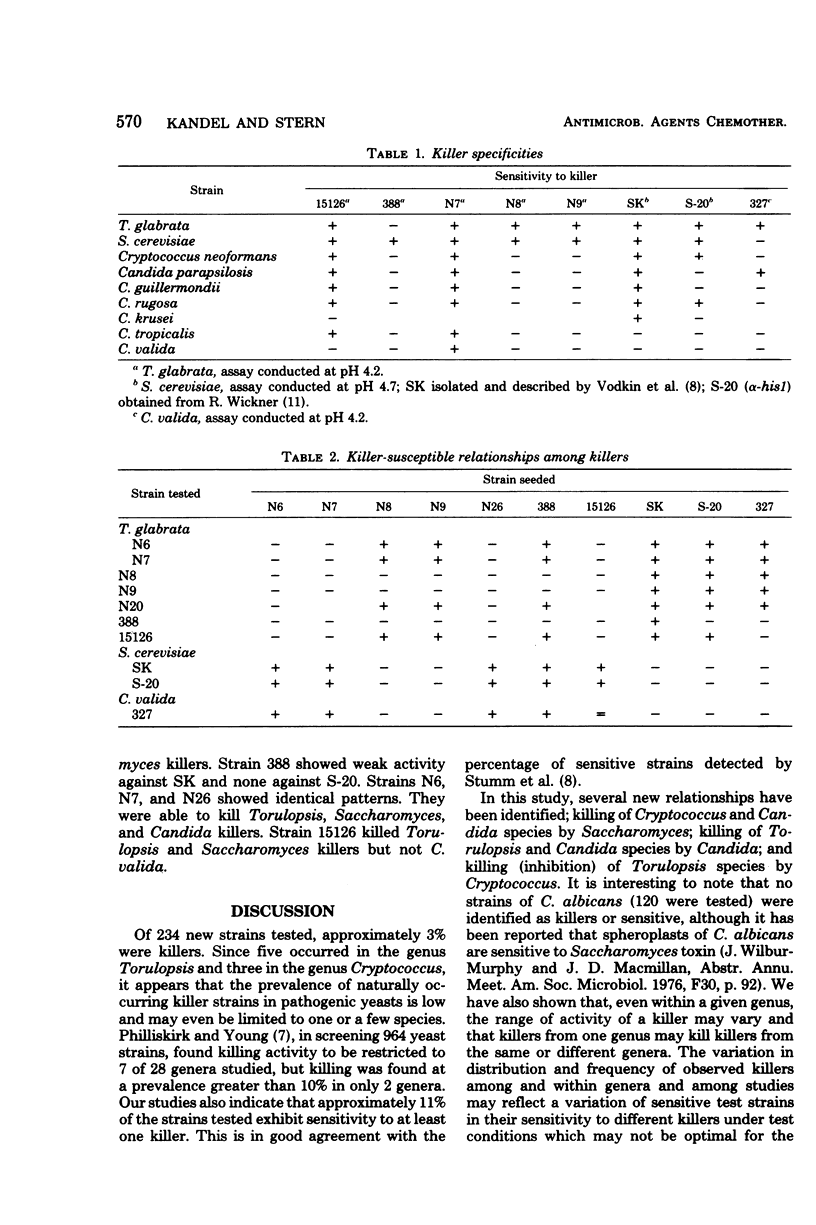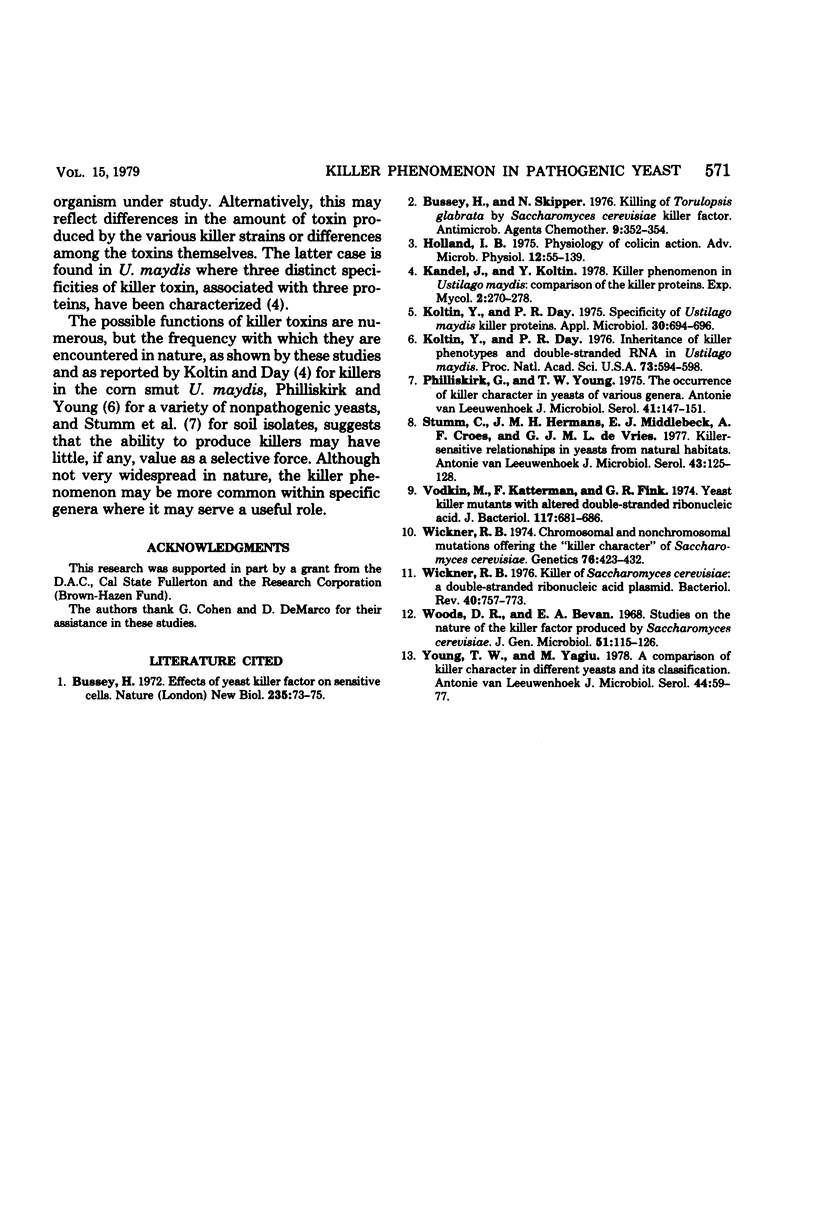Abstract
Potentially pathogenic yeast strains from four genera, Candida, Cryptococcus, Torulopsis, and Trichosporon, were examined for killer activity and sensitivity using Saccharomyces and Torulopsis strains of known killer status. Tests were performed by using a streak method and by concentration of culture fluid by lyophilization. Of 236 strains examined, killers were found with low prevalence among Torulopsis and Cryptococcus strains; Candida and Trichosporon isolates showed no killing activity. Different specificities of killing activity were observed among strains of a single species. Sensitive strains were found with varying frequencies in all genera but Trichosporon.
Full text
PDF



Selected References
These references are in PubMed. This may not be the complete list of references from this article.
- Bussey H. Effects of yeast killer factor on sensitive cells. Nat New Biol. 1972 Jan 19;235(55):73–75. doi: 10.1038/newbio235073a0. [DOI] [PubMed] [Google Scholar]
- Bussey H., Skipper N. Killing of Torulopsis glabrata by Saccharomyces cerevisiae killer factor. Antimicrob Agents Chemother. 1976 Feb;9(2):352–354. doi: 10.1128/aac.9.2.352. [DOI] [PMC free article] [PubMed] [Google Scholar]
- Koltin Y., Day P. R. Inheritance of killer phenotypes and double-stranded RNA in Ustilago maydis. Proc Natl Acad Sci U S A. 1976 Feb;73(2):594–598. doi: 10.1073/pnas.73.2.594. [DOI] [PMC free article] [PubMed] [Google Scholar]
- Koltin Y., Day P. R. Specificity of Ustilago maydis killer proteins. Appl Microbiol. 1975 Oct;30(4):694–696. doi: 10.1128/am.30.4.694-696.1975. [DOI] [PMC free article] [PubMed] [Google Scholar]
- Philliskirk G., Young T. W. The occurrence of killer character in yeasts of various genera. Antonie Van Leeuwenhoek. 1975;41(2):147–151. doi: 10.1007/BF02565046. [DOI] [PubMed] [Google Scholar]
- Stumm C., Hermans J. M., Middelbeek E. J., Croes A. F., de Vries G. J. Killer-sensitive relationships in yeasts from natural habitats. Antonie Van Leeuwenhoek. 1977;43(2):125–128. doi: 10.1007/BF00395667. [DOI] [PubMed] [Google Scholar]
- Vodkin M., Katterman F., Fink G. R. Yeast killer mutants with altered double-stranded ribonucleic acid. J Bacteriol. 1974 Feb;117(2):681–686. doi: 10.1128/jb.117.2.681-686.1974. [DOI] [PMC free article] [PubMed] [Google Scholar]
- Wickner R. B. Chromosomal and nonchromosomal mutations affecting the "killer character" of Saccharomyces cerevisiae. Genetics. 1974 Mar;76(3):423–432. doi: 10.1093/genetics/76.3.423. [DOI] [PMC free article] [PubMed] [Google Scholar]
- Wickner R. B. Killer of Saccharomyces cerevisiae: a double-stranded ribonucleic acid plasmid. Bacteriol Rev. 1976 Sep;40(3):757–773. doi: 10.1128/br.40.3.757-773.1976. [DOI] [PMC free article] [PubMed] [Google Scholar]
- Woods D. R., Bevan E. A. Studies on the nature of the killer factor produced by Saccharomyces cerevisiae. J Gen Microbiol. 1968 Apr;51(1):115–126. doi: 10.1099/00221287-51-1-115. [DOI] [PubMed] [Google Scholar]
- Young T. W., Yagiu M. A comparison of the killer character in different yeasts and its classification. Antonie Van Leeuwenhoek. 1978;44(1):59–77. doi: 10.1007/BF00400077. [DOI] [PubMed] [Google Scholar]


